Battle-scarred skull found at Culloden 3D scanned
- Published
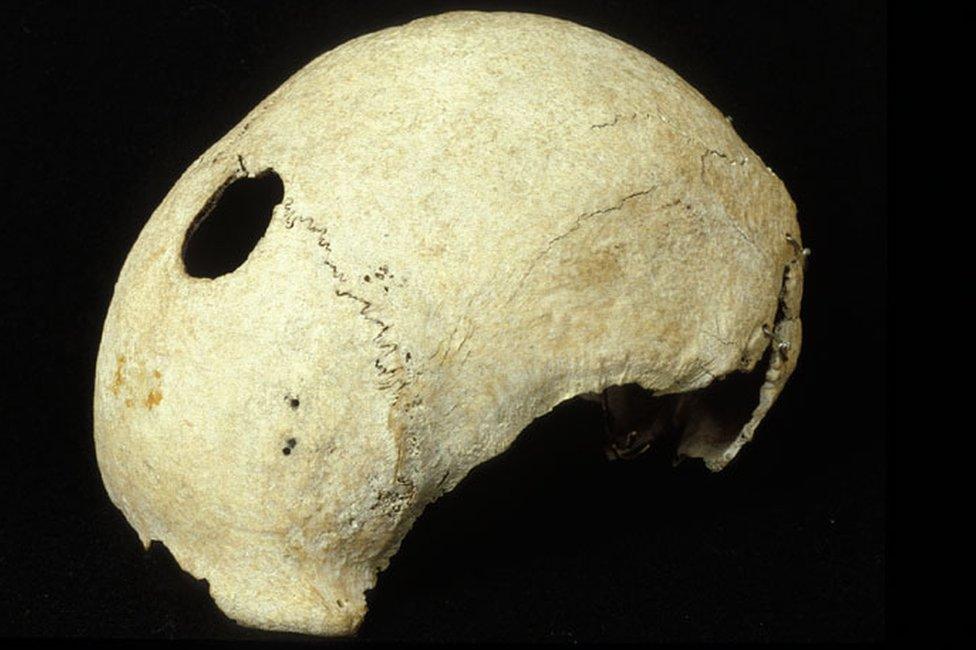
The fragment of skull is thought to have been recovered from Culloden Battlefield
A section of skull believed to be from a combatant killed at the Battle of Culloden has been recreated as a 3D digital model.
Archaeologists said the bone showed signs of a fatal injury caused by a musket ball.
It is not known if the casualty was a fighter on the Jacobite or government army side in the battle in April 1746.
The National Trust for Scotland (NTS) and The Royal College of Surgeons of Edinburgh worked on 3D model.
The skull has been on display at the Surgeons' Hall Museums in Edinburgh for many years.
The bone is the only remains confirmed as coming from Culloden, according to NTS. The battlefield is an official war grave today.
The 3D model, external was recreated using overlapping digital photography in a process called photogrammetry.
It means archaeologists and scientists can examine the skull without it having to leave the care of The Royal College of Surgeons of Edinburgh.
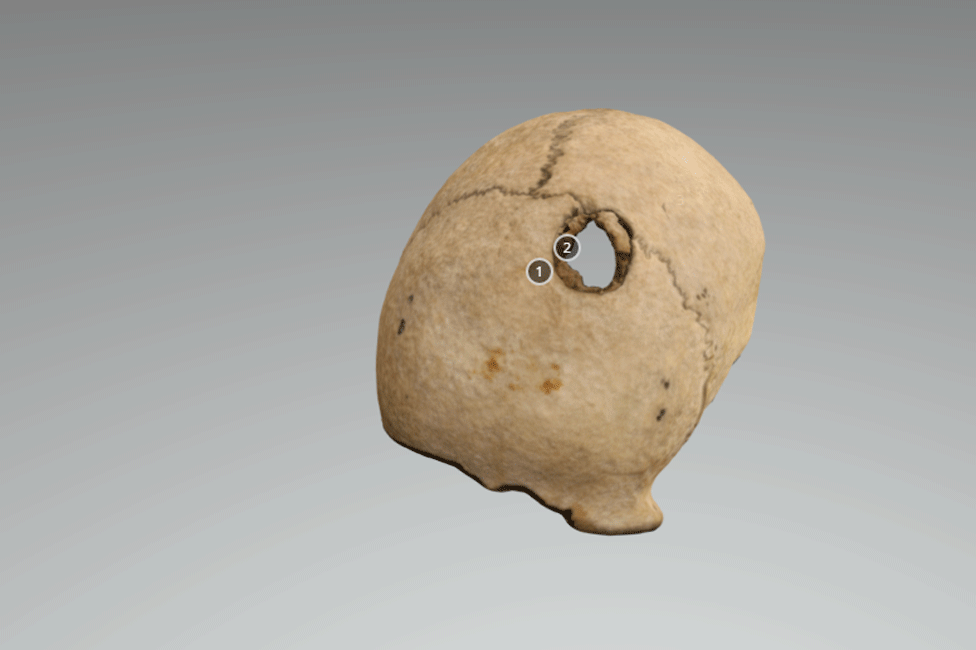
A 3D digital model has been created of the bone
The skull fragment was part of a large collection of more than 3,000 items purchased from leading Scottish surgeon Sir Charles Bell in 1825.
The catalogue entry simply states that the skull was found on part of the field at Culloden where men fighting for Bonnie Prince Charlie made an attack on government troops.
There are no further details from Bell's original records as to when he acquired it, but it has been established that artefacts were collected from the battlefield in the years following 1746.
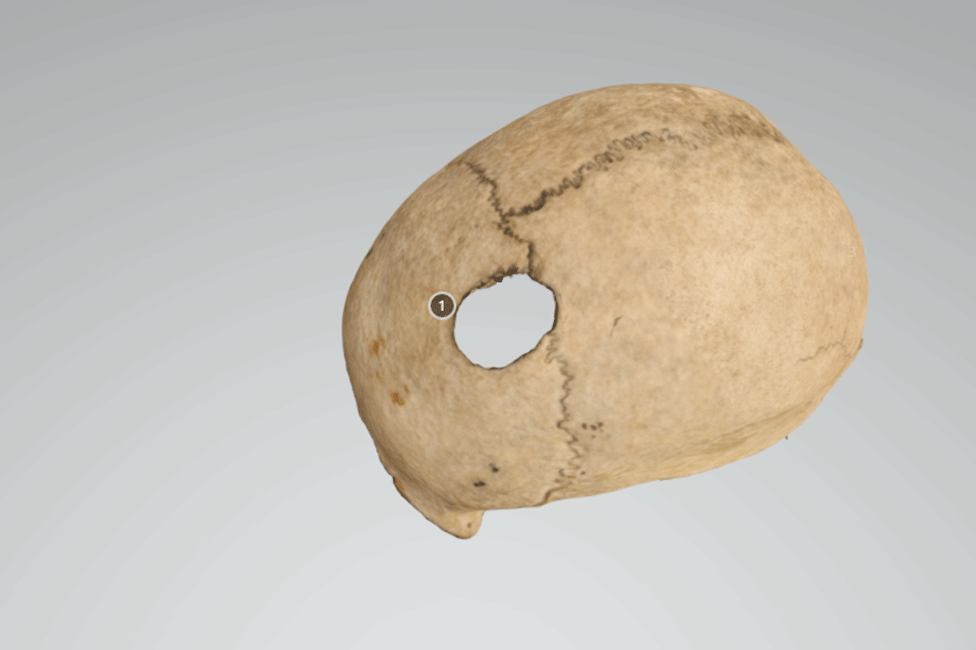
Archaeologists say that the damage to the skull may have been caused by a musket ball
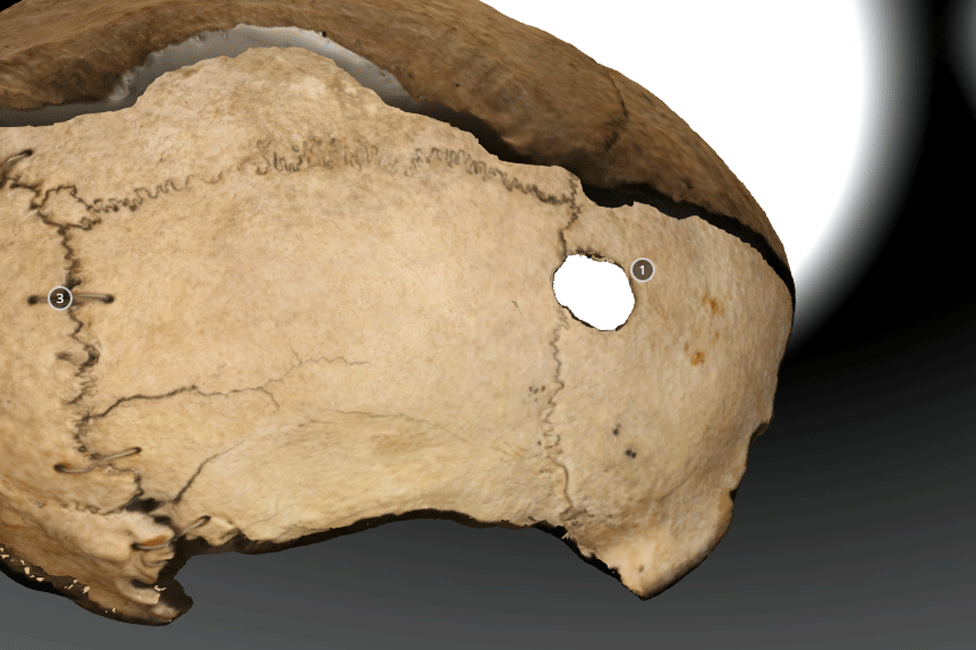
The skull shows evidence of entry and exit wounds says NTS
NTS, which manages the battlefield near Inverness, said the skull shows clear evidence of an entry wound of a projectile and a larger exit wound.
Analysis suggests the damage could have been caused by a musket ball fired from about 45m (147ft) away.
Derek Alexander, head of archaeological services for the trust, said: "We cannot say whether the skull fragment belongs to a Jacobite or one of the government troops but the injury to the top of the head could be interpreted in a number of different ways.
"It could be from someone, head down, looking at the ground as they charge forward, or an individual who has already been wounded and is on their hands and knees or indeed it could be someone hit while focusing on reloading their musket."

The digital model was created using overlapping photographs
Stefan Sagrott, archaeology data officer for NTS, said: "Photogrammetry is a great tool for us, especially because it is low cost and doesn't require any fancy equipment aside from a decent camera and the processing software.
"We are using it to record a whole range of cultural heritage sites, monuments and artefacts, and we are getting some really outstanding results.
"By using it to record cultural heritage, it allows us to open up the past to even more people than ever before. We can take an object which would be too fragile for anyone to handle, photograph it, 3D model it and then make it available online for anyone to see, wherever they are."
He added: "Another brilliant result of this, is that we can also 3D print the models, creating accurate replicas of objects, such as the Culloden skull, and they can then be displayed at a property and handled without any worry of damaging the original object."
Rohan Almond, assistant curator at Surgeons' Hall Museums, said it was an "exciting project".
He said: "By working together and using such technology, we are going to be able to engage even more people in the story of one of Scotland's pivotal battles."
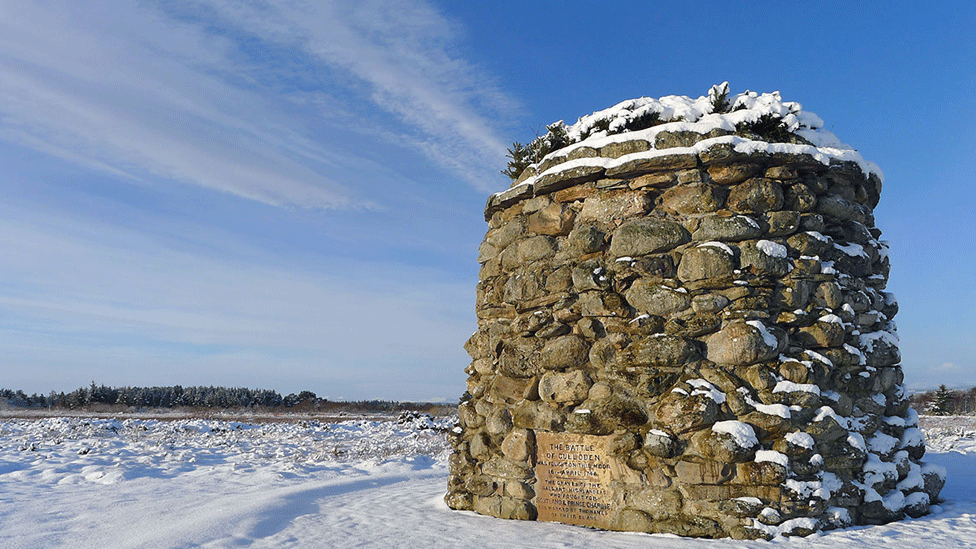
Jacobite and government armies fought at Culloden 270 years ago
- Published25 November 2015
